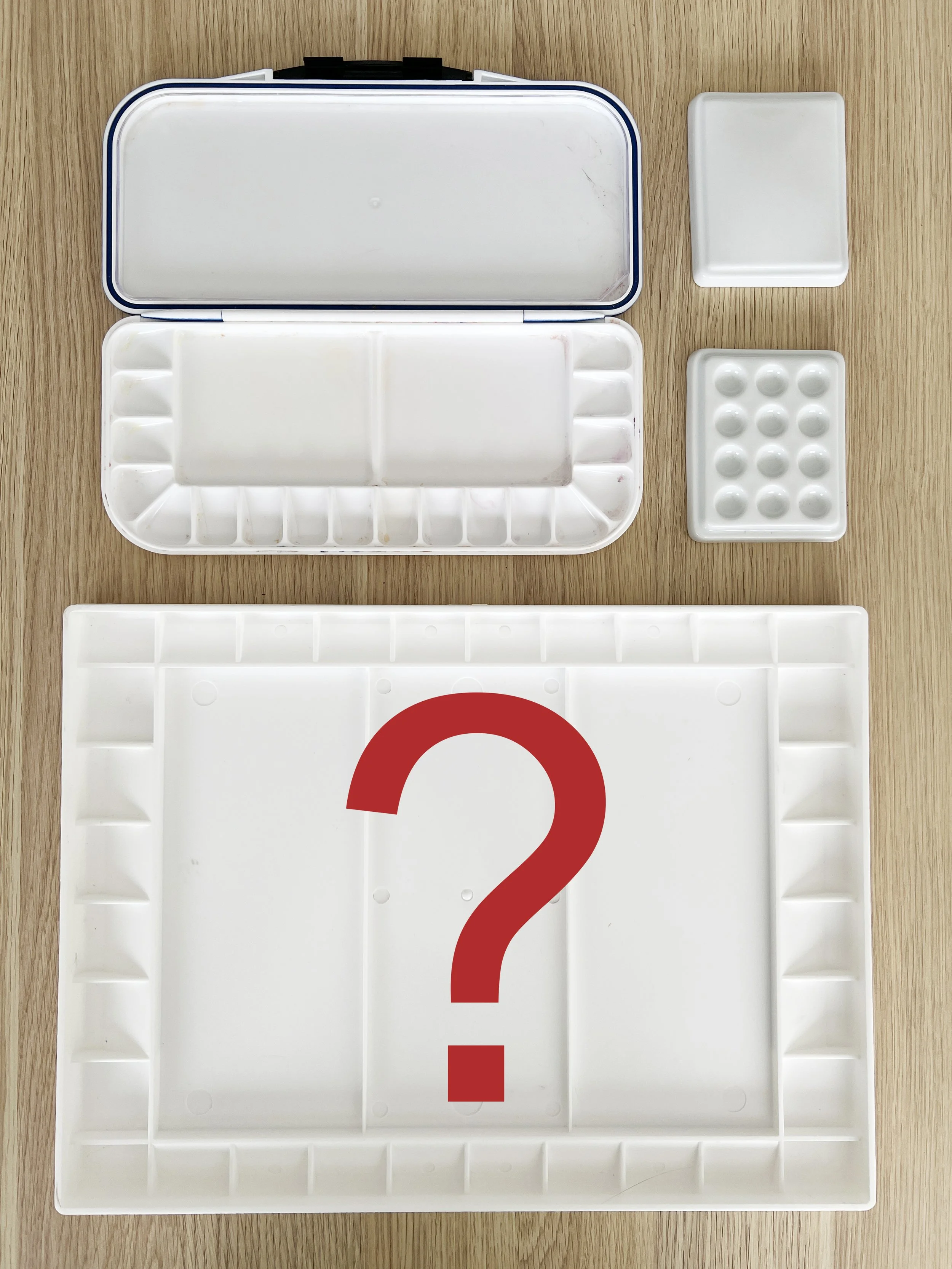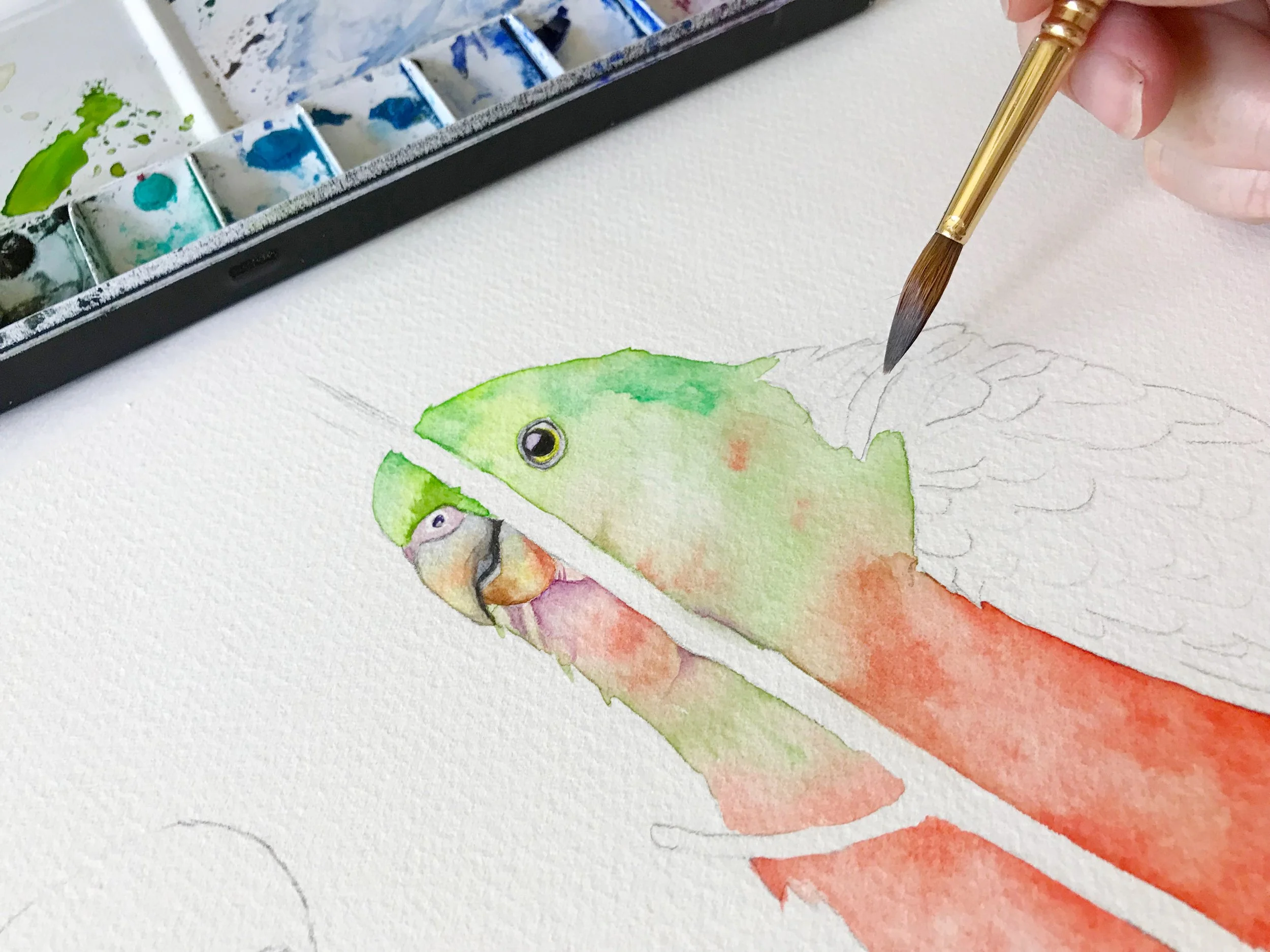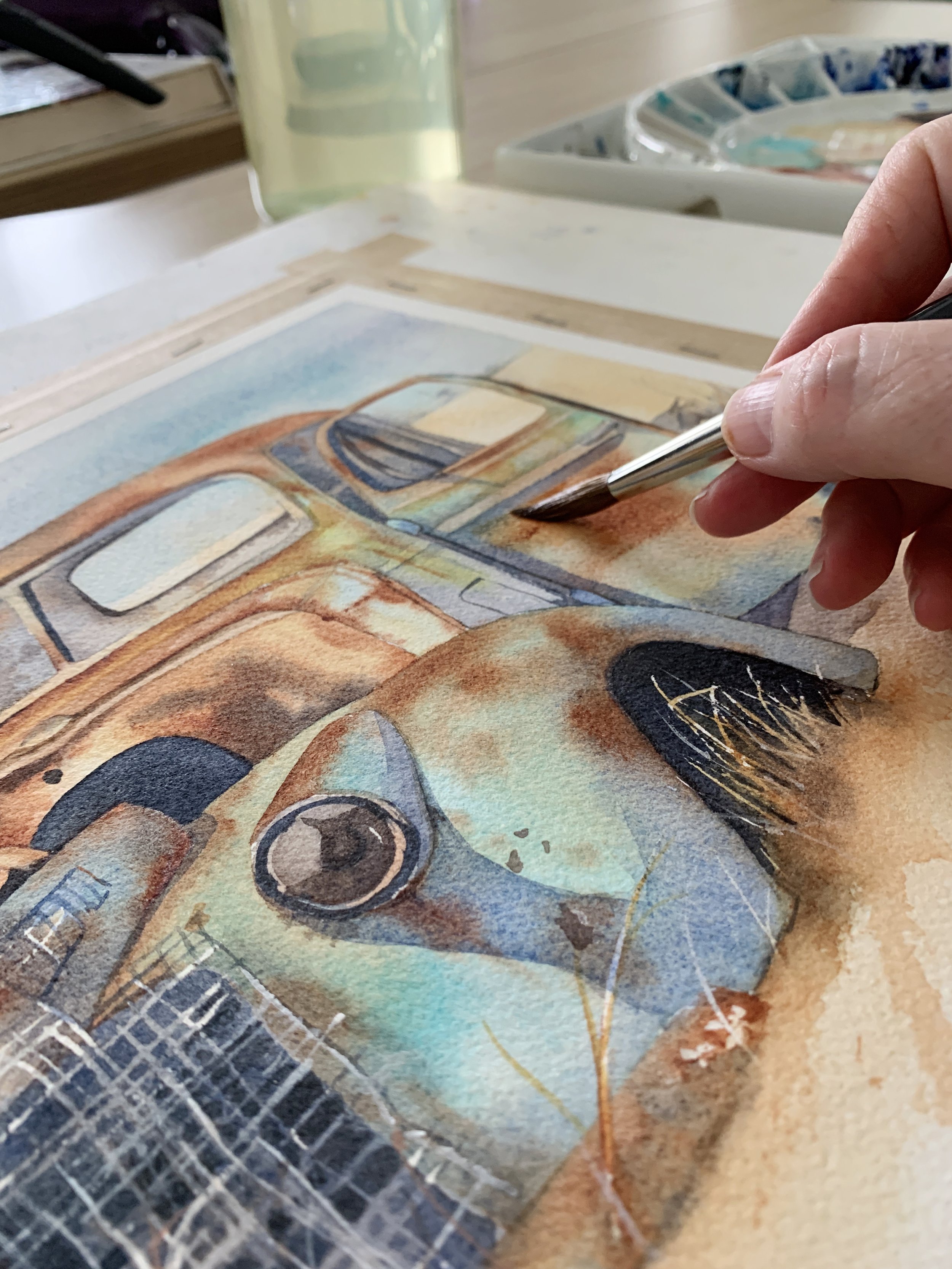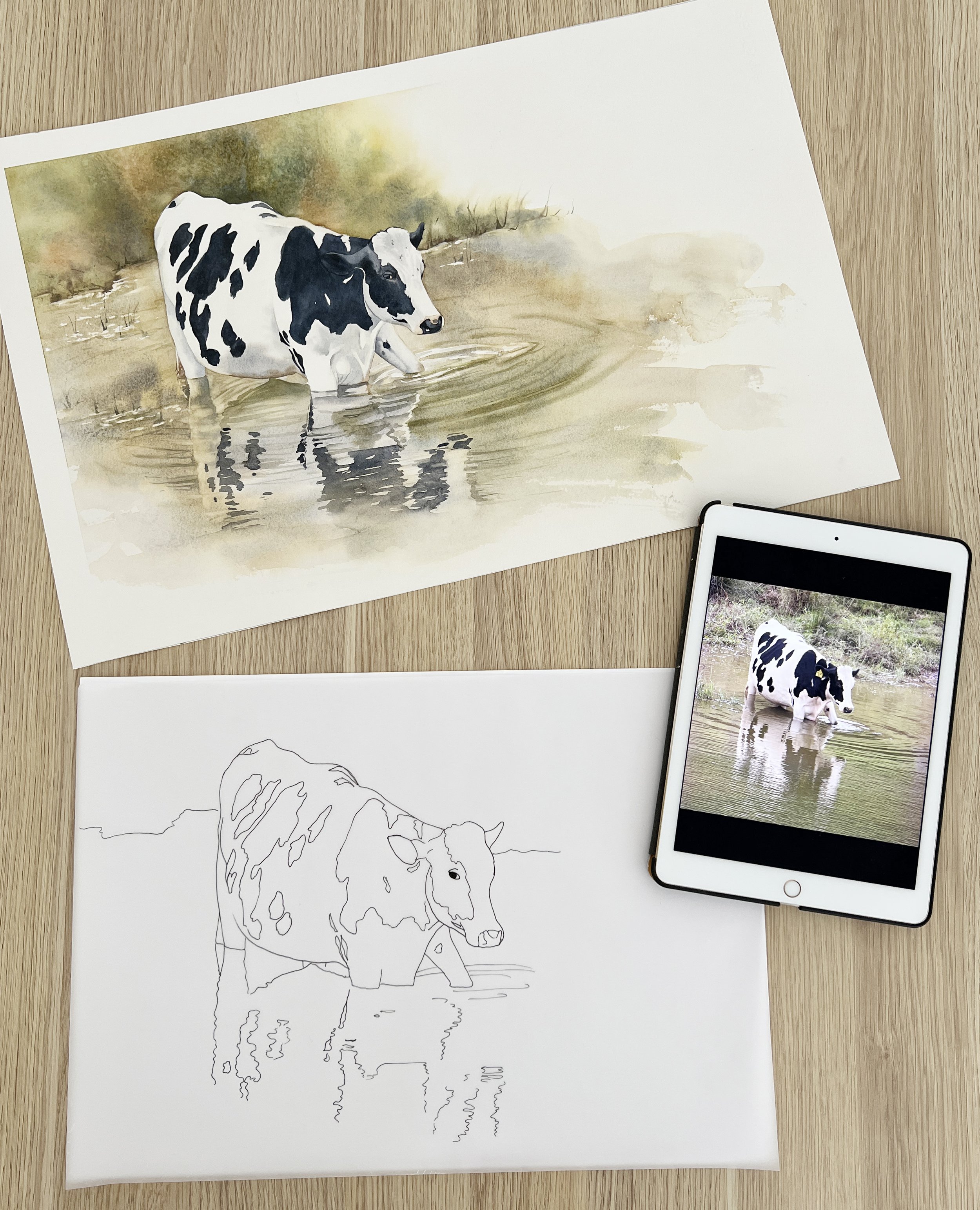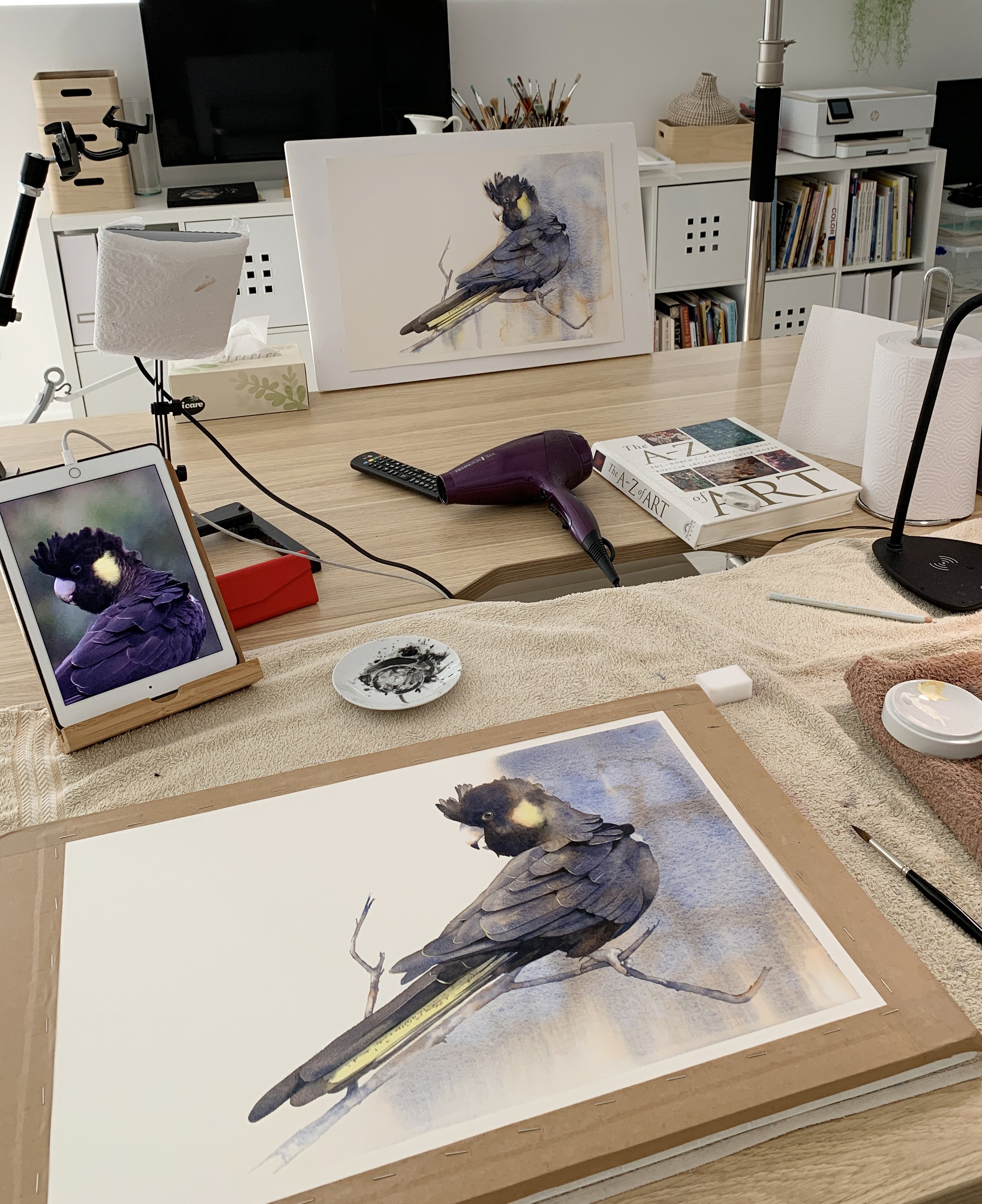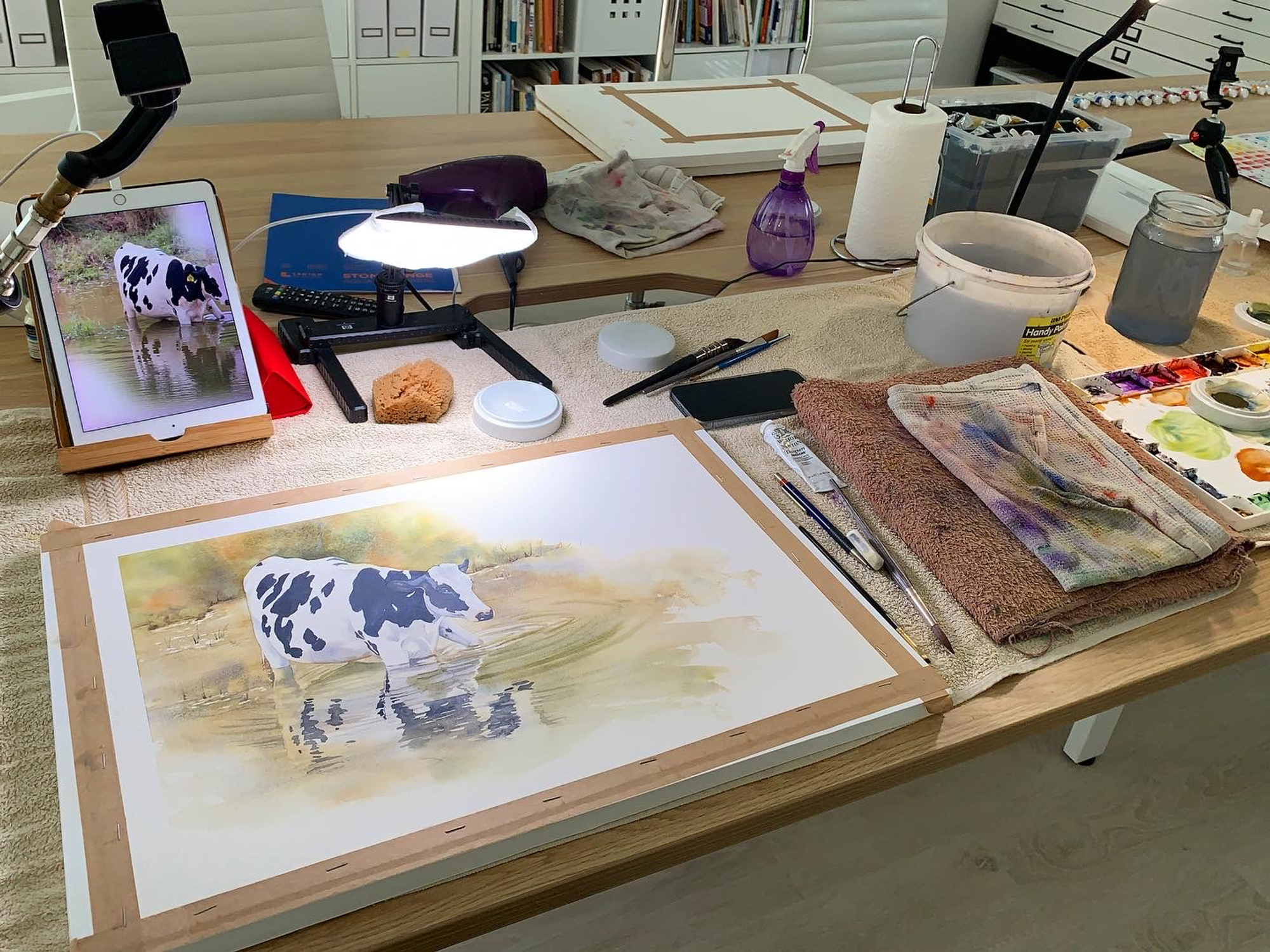It’s one of the most common questions beginners ask – and for good reason. Watercolour has a mind of its own, and once the paint hits the paper, there’s no going back. Knowing where to start can save a lot of heartache (and paper).
Read MoreWhen you watch my tutorials, I want you to think of them as a jumping-off point. Don’t feel like you need to replicate every step exactly. Instead, start experimenting by making small changes. For instance, you could swap out the colours I use and choose a palette that resonates with you.
If I’m painting a bird, maybe you’ll add your own background - a loose wash of colour or some foliage to give it your unique flair. Another idea is to combine techniques or elements from different tutorials to create something entirely your own.
Read MoreIn my videos, I take you behind the scenes of my painting process. You’ll see how I carefully select a subject photo - whether it’s a delicate flower, a majestic animal, or a simple object that tells a story. I explain how to choose colours that bring harmony and life to your paintings, sharing tips on colour mixing that will build your confidence with every palette you create.
I provide a clean and accurate line drawing with each tutorial, ensuring a strong foundation for the painting. No detail is too small, and nothing is hidden. I want you to see and understand every step, from the initial inspiration to the final brushstroke. I share a full video, that lets you recreate the tutorial, while learning all the elements needed to bring your artistic vision to life. Not only that, but I believe in sharing my knowledge openly so that you can learn and grow as an artist.
Read MoreWhen you're starting out, it's tempting to buy the cheapest supplies available – after all, you’re just experimenting, right? But here's the thing: quality materials can make all the difference in how your artwork turns out and, more importantly, in how you feel while painting.
Read MoreEvery artist’s needs are different, and customising your palette for specific projects or styles can enhance your workflow. For example, you might create a separate palette for landscapes, focusing on earthy tones and a wider range of greens, while a portrait palette could include more colours for skin tones and lots of subtle neutrals.
Read MoreThe wet-on-wet technique is all about letting go and embracing the unpredictability of watercolour. Start by thoroughly wetting your paper with clean water. Next, load your brush with pigment and apply it to the wet surface. Watch as the colours blend and flow into each other on the wet paper, creating soft, organic transitions.
This technique is perfect for painting dreamy skies, misty landscapes, and soft backgrounds where you want the colors to meld seamlessly. It's like watching magic unfold on your paper, as the water guides the paint in beautiful, unexpected ways.
Read MoreMany beginners find colour wheels confusing and not very intuitive. Instead, I recommend a more straightforward approach and easy trick: utilising the online resources of reputable paint manufacturers like Winsor and Newton, Daniel Smith, or Schmincke. These companies organise their colours not just by hue but by temperature, which can be immensely helpful.
Read MoreUnderstanding why some pigments stain while others do not can feel a bit like unlocking a secret garden - once inside, everything seems vivid and clear. The behaviour of watercolour pigments, whether they are likely to stain or not, is deeply rooted in the characteristics of the pigments used in their creation. This variance can dramatically affect both the technique and final appearance of a watercolour piece.
Read MoreOnce our paintings are complete, we might refine the presentation by carefully trimming the edges, ensuring each stroke and splash is framed perfectly, enhancing the artwork’s visual appeal. Additionally, when our pieces are mounted for painting or display, cutting becomes essential to gently free them from their boards.
This meticulous attention to detail in paper cutting ensures our watercolour artworks are showcased with precision, embodying the true essence of our artistic intent.
Read MoreThe way you organise your workspace can significantly impact your artistic flow, much like a well-prepared table sets the scene for a meal. Imagine your workspace as a canvas, where each element — from palettes to brushes, from water jars to the paper itself — is positioned not merely by necessity, but with an intuitive grace.
Read MoreBefore you start painting, every artist’s journey begins with the first step: selecting your tools and getting familiar with all the materials you need. Watercolour paints come in pans and tubes, each with its unique charm. Watercolour brushes, in their myriad shapes and sizes, are your loyal companions, and watercolour paper—your canvas—awaits with its textures and weights. There is cold press paper, hot press paper, paper, that lies in between... Let's not forget the supporting cast: watercolour palette, masking fluid, and sponges.
Read MoreDive into the splashy, unpredictable world of watercolour with a word list that's more colourful than my palette after a day's work. Think of this not just as a list, but as your trusty sidekick in the art studio, ready to decode the mysterious language of watercolours. From the gravity-defying "wet on wet" technique to the rebellious "back runs" that refuse to stay put, these terms are the secret handshake of the watercolour society.
Read MoreDiving into the world of watercolor painting can be both exhilarating and a bit daunting for beginners. With its beautiful washes and vibrant hues, watercolor art offers a unique medium to express creativity. However, the thought of mastering this fluid form of painting might seem overwhelming at first.
Read MoreIt's important to store your watercolour brushes well to maintain their shape, preserve the bristles, and extend their lifespan.
I used to store my brushes upright in containers but when we built my studio I included some narrow drawers to be built into the cabinetry.
I now store my brushes in the drawers. I bought some PVC multi purpose cupboard protector rolls and I cut them to fit inside the drawers. The liner stops the brushes from rolling around when I open and shut the drawers.
Read MoreUnderstanding the amount of water on your brush and its interplay with the paper is vital. Watercolour techniques like dry-on-dry, wet-on-dry, wet-on-wet, and dry-on-wet are not just techniques; they are the essence of watercolour painting. Each watercolour method allows for a different expression of water and pigment, and mastering these can elevate your art.
Many beginners may not use enough water on their paper. The brush should glide effortlessly over the paper for most techniques, except for dry brushing. Adjusting the water level in the paint mixture or in your brush, can help achieve the right flow.
Read MoreWhen creating drawings for watercolour paintings, you need to select and include essential information while omitting unnecessary details. Planning plays a crucial role in guiding these decisions it serves as a roadmap, allowing you to make informed decisions about what to emphasise in your line drawing.
Begin your painting process by carefully choosing your reference material, prioritising clear focal points and well-defined shapes that will translate effectively into your drawing.
Read MoreWhen working wet on wet, the fluidity of watercolour paint is one of its characteristics that makes it so appealing to use. Some artists say that a watercolour painting often paints itself. This is because of the spontaneous and unpredictable nature of working with watercolor. It captures the idea that watercolor, due to its unique properties, can sometimes lead to unexpected and beautiful results that may seem to emerge organically, almost as if guided by the medium itself.
Read MorePainting in watercolour is magical! I became captivated by it in 2011, and my excitement for it has not waned since then.
With its delicate washes, amazing luminosity, and unpredictable nature, once watercolour has you in its spell there is no turning back. Every brush stroke becomes an adventure as you watch the wet paint dance over the paper. There is no other medium like it.
Read More



